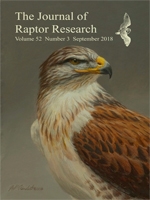Although best known for capturing live prey, five of the six members of the genus Falco in the United States or Canada are documented facultative scavengers. During 1109 surveys of three coastal beaches in Washington between 1983 and 2015, we observed hunting and feeding by Peregrine Falcons (Falco peregrinus), a species that migrates through and overwinters at those coastal beaches. Excluding records of Peregrine Falcons with food items of unknown origin (n = 44), our 172 observations of feeding included 77 prey items that we concluded the falcons had captured, 46 direct observations of prey captures, and 49 cases of scavenging. Scavenging records represented 29% of our observations of Peregrine Falcons with food items, and included food items representing 19 taxa. Seabirds and waterbirds were the most common food items consumed as carrion (44 of 49 items; 90%), whereas other captured or targeted prey were most often shorebirds or other small birds (206 of 277 items; 74%). We observed 21 color-banded falcons, ranging in age from <1 to 4 yr, scavenging up to three times each. We observed more scavenging by immature (<1 yr old) falcons than by adults, even though hunting success was similar between immature and adult falcons. We detected no difference in the occurrence of scavenging by season. Given the frequency of scavenging, the biomass of carrion potentially consumed, and the apparently predictable presence of carrion in the study area, we concluded that scavenging by peregrines in coastal Washington is relatively common. Additionally, carrion may represent a commonly used and important source of food in other regions of the world, particularly where carrion is common and persistent in the environment.
How to translate text using browser tools
1 September 2018
Scavenging as a Food-Acquisition Strategy by Peregrine Falcons
Daniel E. Varland





